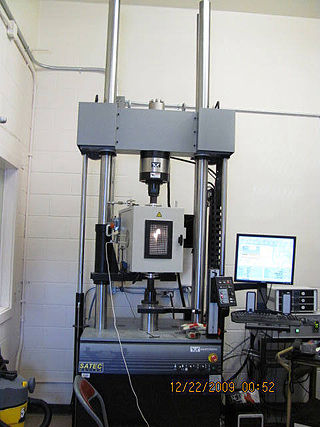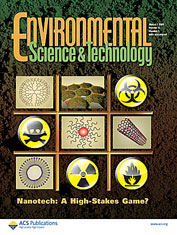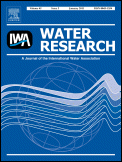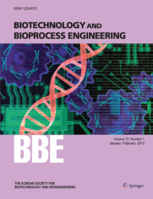
Light pollution is the presence of unwanted, inappropriate, or excessive artificial lighting. In a descriptive sense, the term light pollution refers to the effects of any poorly implemented lighting, during the day or night. Light pollution can be understood not only as a phenomenon resulting from a specific source or kind of pollution, but also as a contributor to the wider, collective impact of various sources of pollution.

The Kruithof curve describes a region of illuminance levels and color temperatures that are often viewed as comfortable or pleasing to an observer. The curve was constructed from psychophysical data collected by Dutch physicist Arie Andries Kruithof, though the original experimental data is not present on the curve itself. Lighting conditions within the bounded region were empirically assessed as being pleasing or natural, whereas conditions outside the region were considered uncomfortable, displeasing or unnatural. The Kruithof curve is a sufficient model for describing pleasing sources that are considered natural or closely resemble Planckian black bodies, but its value in describing human preference has been consistently questioned by further studies on interior lighting.

Lighting or illumination is the deliberate use of light to achieve practical or aesthetic effects. Lighting includes the use of both artificial light sources like lamps and light fixtures, as well as natural illumination by capturing daylight. Daylighting is sometimes used as the main source of light during daytime in buildings. This can save energy in place of using artificial lighting, which represents a major component of energy consumption in buildings. Proper lighting can enhance task performance, improve the appearance of an area, or have positive psychological effects on occupants.
The impact factor (IF) or journal impact factor (JIF) of an academic journal is a scientometric index calculated by Clarivate that reflects the yearly mean number of citations of articles published in the last two years in a given journal, as indexed by Clarivate's Web of Science.
The Journal of the Association for Information Science and Technology is a monthly peer-reviewed academic journal covering all aspects of information science published by Wiley-Blackwell on behalf of the Association for Information Science and Technology. The journal publishes original research and rapid communications, as well as book reviews and announcements of the association. Occasional special issues appear with contents focused on a single topic area.

Building science is the science and technology-driven collection of knowledge in order to provide better indoor environmental quality (IEQ), energy-efficient built environments, and occupant comfort and satisfaction. Building physics, architectural science, and applied physics are terms used for the knowledge domain that overlaps with building science. In building science, the methods used in natural and hard sciences are widely applied, which may include controlled and quasi-experiments, randomized control, physical measurements, remote sensing, and simulations. On the other hand, methods from social and soft sciences, such as case study, interviews & focus group, observational method, surveys, and experience sampling, are also widely used in building science to understand occupant satisfaction, comfort, and experiences by acquiring qualitative data. One of the recent trends in building science is a combination of the two different methods. For instance, it is widely known that occupants’ thermal sensation and comfort may vary depending on their sex, age, emotion, experiences, etc. even in the same indoor environment. Despite the advancement in data extraction and collection technology in building science, objective measurements alone can hardly represent occupants' state of mind such as comfort and preference. Therefore, researchers are trying to measure both physical contexts and understand human responses to figure out complex interrelationships.
The h-index is an author-level metric that measures both the productivity and citation impact of the publications, initially used for an individual scientist or scholar. The h-index correlates with obvious success indicators such as winning the Nobel Prize, being accepted for research fellowships and holding positions at top universities. The index is based on the set of the scientist's most cited papers and the number of citations that they have received in other publications. The index has more recently been applied to the productivity and impact of a scholarly journal as well as a group of scientists, such as a department or university or country. The index was suggested in 2005 by Jorge E. Hirsch, a physicist at UC San Diego, as a tool for determining theoretical physicists' relative quality and is sometimes called the Hirsch index or Hirsch number.
Environmental Science: Processes & Impacts is a monthly peer-reviewed scientific journal covering all aspects of environmental science. It is published by the Royal Society of Chemistry and Kris McNeill is the editor-in-chief. The journal was established in 1999 as the Journal of Environmental Monitoring and obtained its current title in 2013.

The Chartered Institution of Building Services Engineers is an international professional engineering association based in London, England that represents building services engineers. It is a full member of the Construction Industry Council, and is consulted by government on matters relating to construction, engineering and sustainability. It is also licensed by the Engineering Council to assess candidates for inclusion on its Register of Professional Engineers.

Environmental Science & Technology is a biweekly peer-reviewed scientific journal published since 1967 by the American Chemical Society. It covers research in environmental science and environmental technology, including environmental policy. Environmental Science & Technology has a sister journal, Environmental Science & Technology Letters, which publishes short communications.

Notes and Records: the Royal Society Journal of the History of Science is an international, quarterly peer-reviewed academic journal which publishes original research in the history of science, technology, and medicine. The journal welcomes other forms of contribution including: research notes elucidating recent archival discoveries ; news of research projects and online and other resources of interest to historians; book reviews, including essay reviews, on material relating primarily to the history of the Royal Society; recollections or autobiographical accounts written by Fellows and others recording important moments in science from the recent past. It is published by the Royal Society and the editor-in-chief is Anna Marie Roos supported by an eminent editorial board.

Water Research is a peer-reviewed scientific journal covering research on the science and technology of water quality and its management. It was established in 1967 and is published by Elsevier on behalf of the International Water Association. The editor-in-chief is Eberhard Morgenroth.
The Journal of Microscopy is the monthly peer-reviewed scientific journal of the Royal Microscopical Society which covers all aspects of microscopy including spatially resolved spectroscopy, compositional mapping, and image analysis. This includes technology and applications in physics, chemistry, material science, and the life sciences. It is published by Wiley-Blackwell on behalf of the Society. The editor-in-chief is Michelle Peckham, a Cell Biology professor at University of Leeds.
The journal publishes review articles, original research papers, short communications, and letters to the editor. It was established in 1841 as the Transactions of the Microscopical Society of London, obtaining its current name in 1869, with volume numbering restarting at 1.

Biotechnology and Bioprocess Engineering is a peer-reviewed bimonthly scientific journal published by Springer Science+Business Media on behalf of the Korean Society for Biotechnology and Bioengineering. Biotechnology and Bioprocess Engineering covers all aspects of biotechnology and bioengineering. The editor-in-chief of the journal is Jong Won Yun and Sang Yup Lee (KAIST). The founding editors-in-chief were Cha-Yong Choi, Ho Nam Chang, and Sun Bok Lee (POSTECH).
IEEE Transactions on Antennas and Propagation is a peer-reviewed scientific journal published by the IEEE Antennas & Propagation Society. It covers research on and applications of all aspects of antenna technology and the propagation of electromagnetic waves. It was established in 1952 and is published monthly along with occasional special issues.
SLAS Technology is a peer-reviewed scientific journal published by the Society for Laboratory Automation and Screening in partnership with Elsevier. The editor-in-chief is Edward Kai-Hua Chow, Ph.D.. The journal explores ways in which scientists adapt advancements in technology for scientific exploration and experimentation, especially in life sciences research and development. This includes drug-delivery; diagnostics; biomedical and molecular imaging; personalized and precision medicine; high-throughput and other laboratory automation technologies; micro/nanotechnologies; analytical, separation and quantitative techniques; synthetic chemistry and biology; informatics ; and more. The journal was published from 1996 through 2016 with the title Journal of Laboratory Automation. Its name changed in 2017 to more accurately reflect the evolution of its editorial scope.[1]
The Journal of Biomedical Materials Research is a peer-reviewed scientific journals of biomedical material science. It was established in 1967. In 1974, it absorbed Biomedical Materials Symposium (1971–1974). In 1990, it absorbed the journal Journal of Applied Biomaterials (1990–1995). In 2002, it split into two parts, Journal of Biomedical Materials Research Part A, and Journal of Biomedical Materials Research Part B. The two parts are published by John Wiley & Sons.

ACS Photonics is a monthly, peer-reviewed, scientific journal, first published in January 2014 by the American Chemical Society. The current editor in chief is Romain Quidant. The interdisciplinary journal publishes original research articles, letters, comments, reviews and perspectives.
The Journal of the European Ceramic Society is a monthly peer-reviewed scientific journal published by Elsevier on behalf of the European Ceramic Society. It covers research related to conventional categories of ceramic: structural, functional, traditional or composite. It was established in 1985 as the International Journal of High Technology Ceramics, obtaining its current name in 1989.

Light: Science & Applications is a peer-reviewed open-access scientific journal published by Nature Portfolio on behalf of the Changchun Institute of Optics, Fine Mechanics and Physics, Chinese Academy of Sciences and the Chinese Optical Society. It covers research on all aspects of optics. The journal was established in March 2012 and the editors-in-chief are Jianlin Cao and Xi-Cheng Zhang.











